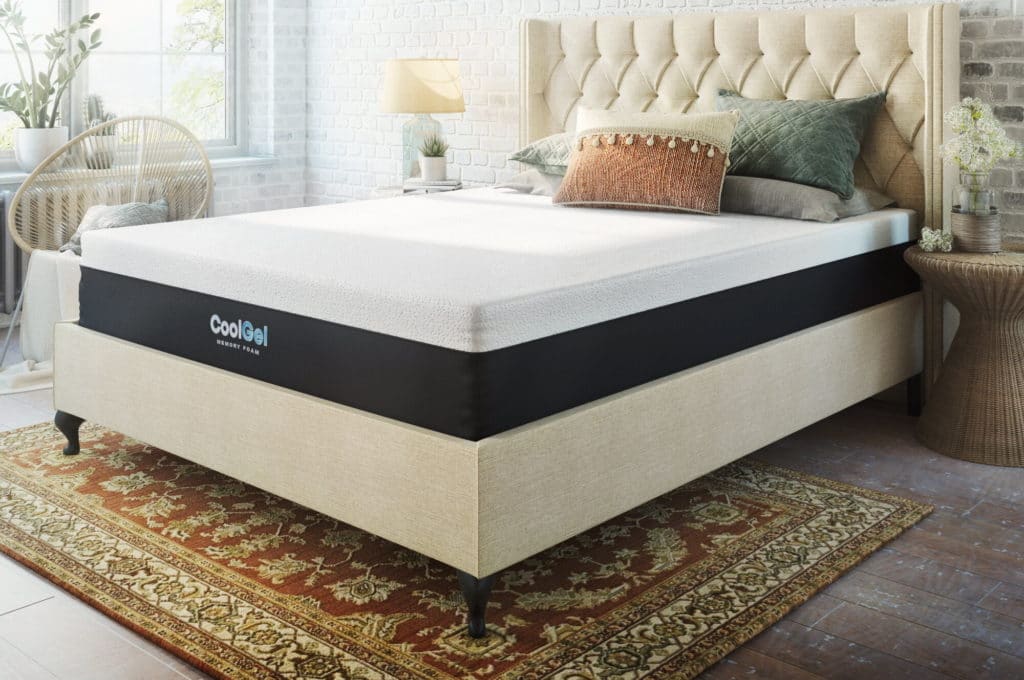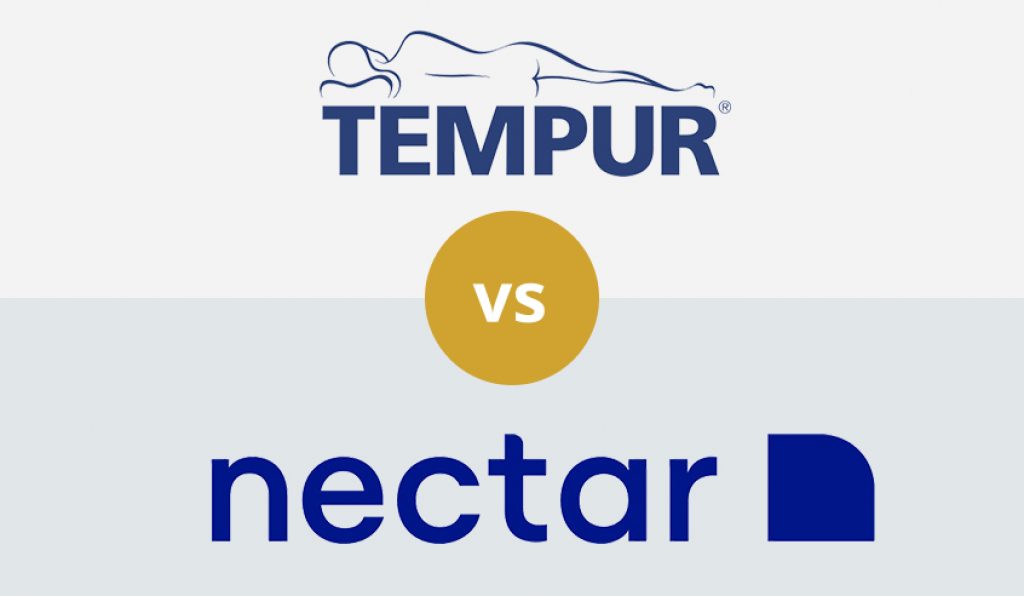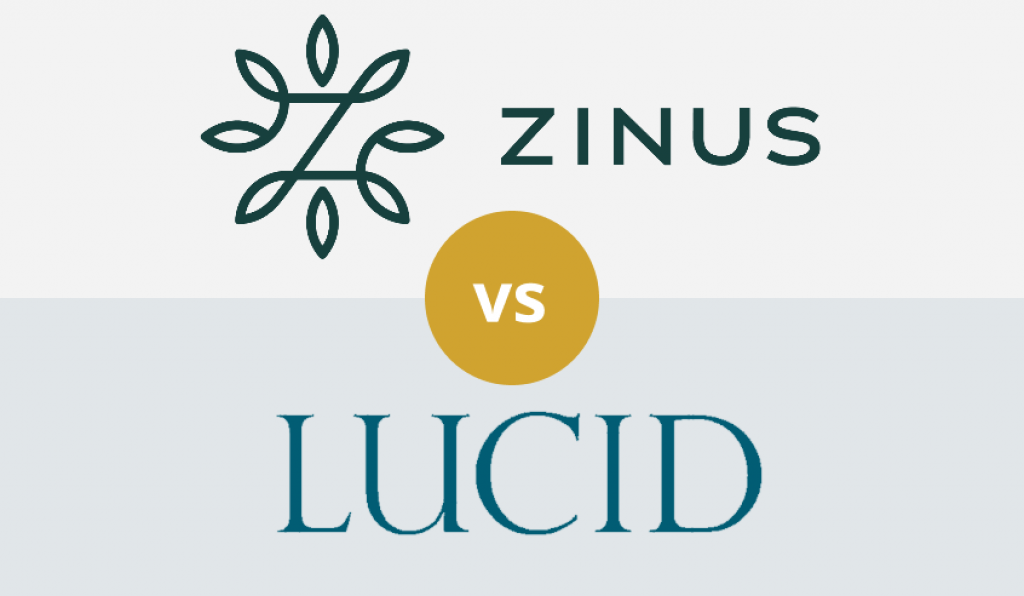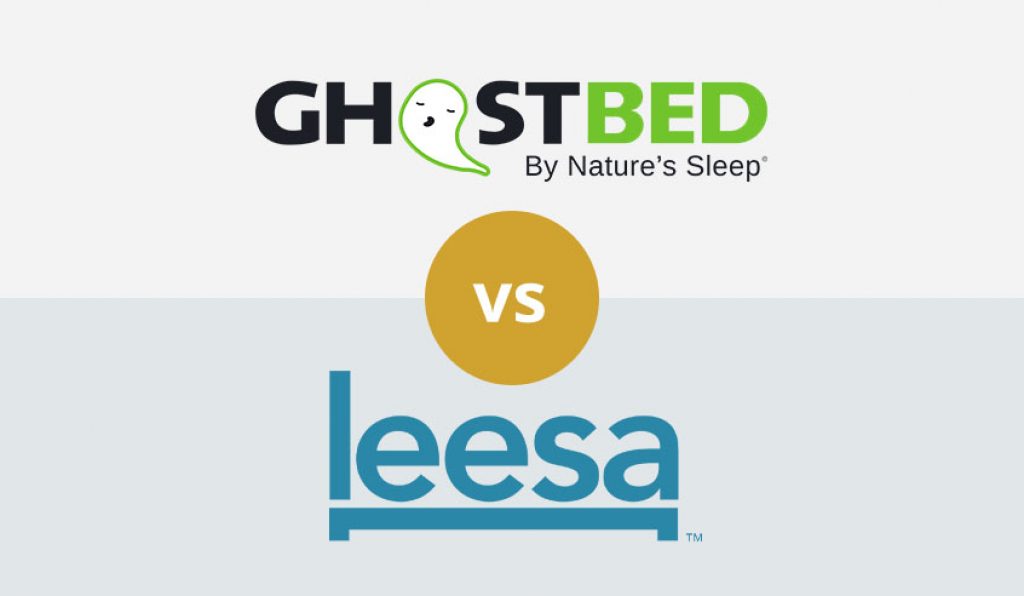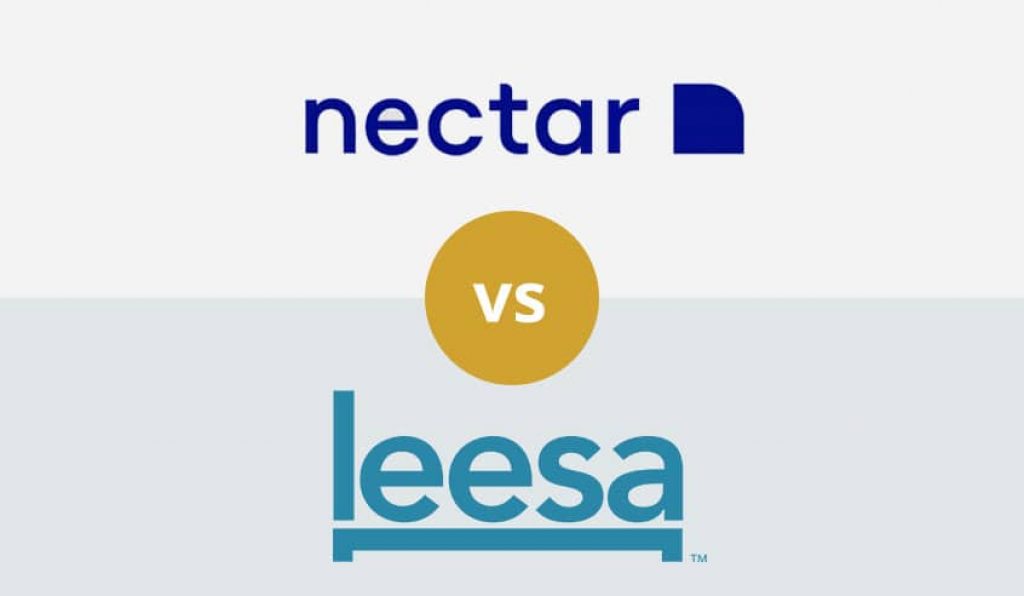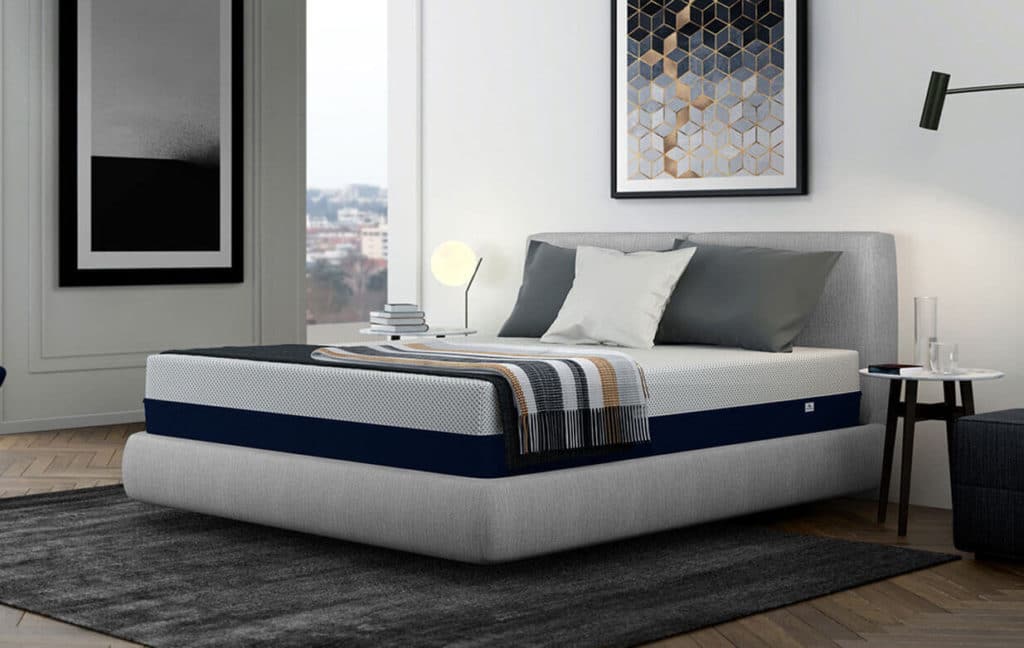

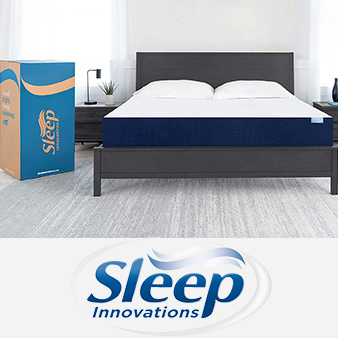
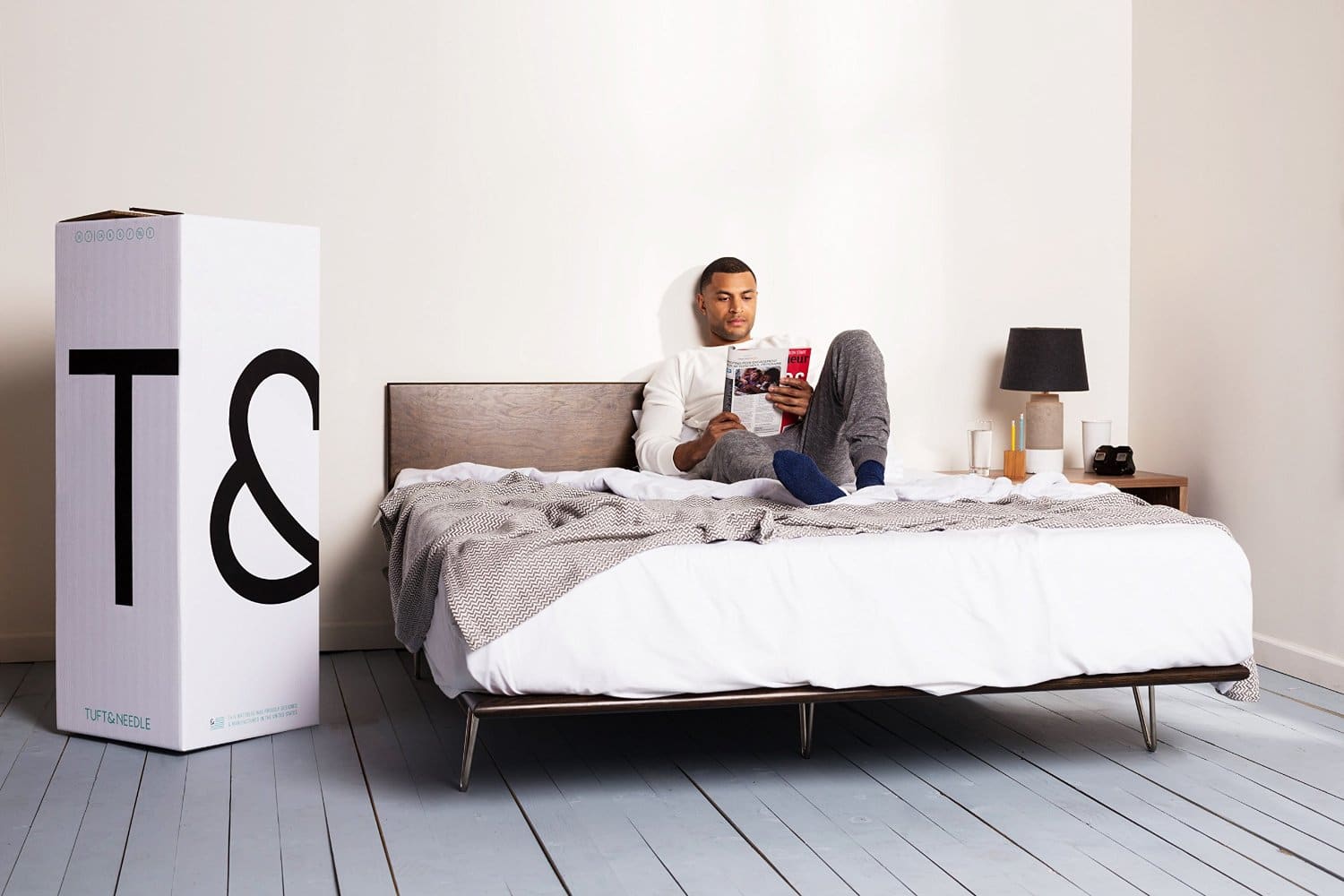
So, you want a better night’s sleep, but don’t want to spend a fortune on a new mattress? In that case, it’s worth taking a close look at the Sleep Innovations and Tuft and Needle mattresses. These foam mattresses are offered at budget-friendly compromises, but they don’t make any compromises when it comes to comfort. In this guide, we’ll help you compare the Sleep Innovations vs. Tuft and Needle mattresses head-to-head in order to determine which one can give you the best night’s rest.
The Sleep Innovations and Tuft and Needle mattresses both sprang out of the need for affordable, yet high-quality mattresses.
Sleep Innovations is aimed squarely at anyone who needs a new mattress at a budget price. The bed is surprisingly inexpensive given that it features a gel memory foam layer and an air channel foam for advanced cooling throughout the night. The only noticeable place where Sleep Innovations cuts corners is in its sleep trial, which is only 30 nights.
Tuft and Needle has been producing a foam bed-in-a-box mattress since 2012 and stands at the top of its class when it comes to customer service. Every bed comes with a 100-night sleep trial and a 10-year warranty. While the Tuft and Needle mattress is notably more expensive than what Sleep Innovations offers, it’s still relatively inexpensive compared to most other brand-name mattresses on the market.
| Sleep Innovations | Tuft & Needle |
|
|
| VIEW ON AMAZON | VIEW ON AMAZON |
| Sleep Innovations | Tuft & Needle | |
| Type | Foam | Foam |
| Firmness | Medium firm (6.5) | Medium firm (6.5) |
| Thickness | 10″ | 10″ |
| Weight | 72.4 lbs | 71 lbs |
| Sleep trial | 30 nights | 100 nights |
| Warranty | 10 years | 10 years |
| Price (Queen) | $336.76 | $595.00 |
| Certification | CertiPUR-US | CertiPUR-US |
| Sleep Innovations | Tuft & Needle | |
| Support core | 5″ supportive premium base foam | 7″ 1.8 PCF HD polyfoam |
| Comfort layers | 3″ air channel foam2″ cooling gel memory foam | 3″ 2.8 PCF polyfoam |
| Cover | Cotton and polyester | Micro polyamide and polyester |
Although both the Sleep Innovations and Tuft and Needle mattresses are 10-inch foam mattresses, the construction differs quite a bit between them.
To start, the Tuft and Needle bed has just a three-inch comfort layer over the high-density foam base. However, that comfort layer is made from a proprietary adaptive foam material, which is highly supportive and pressure-relieving. Unlike memory foam, it keeps you on top of the bed instead of causing you to sink into it. The adaptive foam is also infused with graphite and gel to improve heat dissipation away from your body throughout the night.
The Sleep Innovations mattress uses two foam comfort layers. The first is a gel-infused memory foam layer, which conforms to your body as you lie down in the bed. Because of this layer, you’ll experience a slight sinking feeling in the Sleep Innovations mattress. The second is a three-inch layer of air channel foam, which eliminates pressure points while also promoting airflow through the mattress.
Getting the best mattress for your body comes down to comfort at the end of the day. Here, we’ll take a closer look at how the Sleep Innovations and Tuft and Needle mattresses stack up in a variety of important categories.
On the whole, the Sleep Innovations and Tuft and Needle mattresses are about equal in firmness. Both beds are rated as medium firm, or a 6.5/10. That said, the feel of the two mattresses can be very different.
The Sleep Innovations mattress feels surprisingly firm, especially for heavier sleepers. The memory foam layer somewhat cushions you to prevent pressure points from developing, but many side sleepers find the bed to be simply too hard for their preference. At the same time, many stomach sleepers don’t like the sinking feeling that the memory foam creates. The problem seems to be that the underlying air channel foam doesn’t provide enough support, which causes comfort issues for many people.
The Tuft and Needle mattress, on the other hand, feels true to its firmness rating. The adaptive foam provides enough support that most lighter and average-weight sleepers won’t feel the underlying high-density foam layer at all. Side sleepers actually tend to like this bed because the adaptive foam does such a good job at alleviating pressure points. Heavyset sleepers may feel more support from the high-density foam layer, but this isn’t an issue for most back and stomach sleepers.
The makers of both of these beds put a lot of effort into keeping you cool throughout the night. The Tuft and Needle mattress has graphite and gel infused into the adaptive foam, while the Sleep Innovations mattress uses gel-infused memory foam and a specially designed air channel foam layer.
That said, the Tuft and Needle mattress ultimately does a better job at regulating your body temperature. It helps that you sleep on top of the bed rather than sinking into it, so you’re not fully surrounded by heat-trapping foam. The Sleep Innovations mattress, on the other hand, envelops you in foam so that heat can build up through the night. Many people, of all sleeping types, have noted that the Sleep Innovations bed sleeps much hotter than they expected.
The thick foam layers of the Sleep Innovations bed provide a significant advantage when it comes to isolating motion. The memory foam layer in particular halts vibrations in the bed, so it’s extremely easy to sleep through a partner rolling around in the middle of the night.
The Tuft and Needle mattress is also relatively good at isolating motion transfer, although to a lesser degree. The adaptive foam is less squishy than memory foam, so it allows motion to be transferred across the bed to a greater degree.
The Tuft and Needle bed has a clear edge when it comes to responsiveness – the foam inside is called “adaptive,” after all. When you move around in this mattress, you can expect the foam to snap back almost immediately.
The Sleep Innovations bed is significantly less responsive, which isn’t too surprising since it uses memory foam. This foam moves slowly and may take a few seconds to return to its original shape or to conform to your new body position after you move.
The Tuft and Needle bed is also the better mattress if you’re looking for bounce. The adaptive foam doesn’t mimic the springiness of a traditional innerspring mattress, by any means. However, it does offer a small amount of bounce. On the other hand, the memory foam and air channel foam layers in the Sleep Innovations bed suck you into the mattress rather than bounce you out of it.
Neither the Tuft and Needle or Sleep Innovations mattresses provide terrific edge support, which is true of many foam mattresses. The Sleep Innovations bed is particularly bad in this respect, as the foam essentially collapses if you sit on the foot of the bed. The Tuft and Needle mattress offers slightly more edge support – you can sit and sleep on the edge of the bed without falling out of it.
Both the Tuft and Needle and Sleep Innovations mattresses recommend up to 72 hours to let them fully inflate. However, most users report that they’re ready to sleep on within a few hours of unboxing them. On top of that, reports of a chemical smell are rare for either of these beds.
| SLEEP POSITION | Light sleepers(less than 130 lbs) | Average sleepers(130 lbs to 230 lbs) | Heavy sleepers(greater than 230 lbs) |
| Sleep Innovations | |||
| Side | Fair | Fair | Fair |
| Back | Fair | Good | Fair |
| Stomach | Good | Fair | Fair |
| Tuft & Needle | |||
| Side | Good | Very Good | Fair |
| Back | Good | Very Good | Good |
| Stomach | Good | Good | Good |
The Tuft and Needle mattress caters to a much wider variety of sleepers than the Sleep Innovations bed. That’s in part because the adaptive foam does such a good job at relieving pressure points without sucking you into the bed. Side sleepers, back sleepers, and stomach sleepers all report good experiences with the Tuft and Needle mattress.
The Sleep Innovations bed feels surprisingly firm, which can lead to pressure points for side and lighter back sleepers. Unfortunately, many stomach sleepers don’t find the bed to be comfortable because of the memory foam layer on top. In trying to cater to all sleepers, the Sleep Innovations mattress doesn’t hit the spot for any in particular.
| SIZE | Sleep Innovations | Tuft & Needle |
| Twin | $194.78 | $350 |
| Twin XL | N/A | $395 |
| Full | $235 | $495 |
| Queen | $336.76 | $595 |
| King | $310.50 | $750 |
| California King | $345 | $750 |
| Sleep trial | Warranty and refund | Delivery | |
| Sleep Innovations | 30 nights | 10-year limited warranty | Within the U.S. |
| Tuft & Needle | 100 nights | 10-year limited warrantyFull refund | Within the U.S. |
One of the big differences between the Sleep Innovations and Tuft and Needle mattresses is the sleep trial period. Sleep Innovations only gives you 30 nights, which is barely enough time to let your body acclimate to a new bed. Tuft and Needle is much more in line with the rest of the mattress industry in offering a 100-night sleep trial.
That said, both mattresses come with 10-year limited warranties. If there are any defects or issues with the foam during that time, the companies will issue a full refund for your mattress.
VIEW ON AMAZON [wpsm_pros]
[/wpsm_pros][wpsm_cons]
[/wpsm_cons]
VIEW ON AMAZON [wpsm_pros]
[/wpsm_pros][wpsm_cons]
[/wpsm_cons]
On the whole, the Tuft and Needle is the preferred choice for many sleepers if you can afford the extra expense. Compared to the Sleep Innovations bed, it suits more sleeping styles, offers better temperature regulation throughout the night, and comes with a 100-night sleep trial. That said, our Tuft and Needle vs. Sleep Innovations comparison found that either of these beds can help you get a better night’s sleep.
